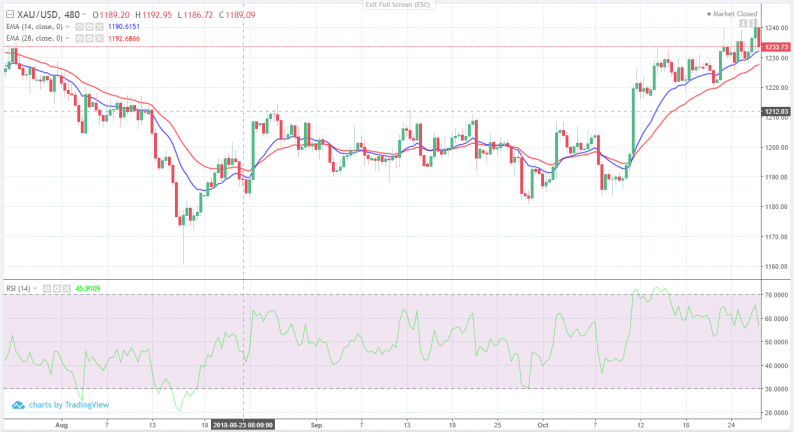In the past few weeks, the price of gold has continued to move up. Last week, it finished its fourth week of straight gains as global markets faced increased volatility. Investors tend to rush to safety during such periods. As a measure of increased tensions, the amount of volatility increased the past week. While there are many measures of market volatility, the most commonly used is the CBOE volatility index. It was launched by CBOE and later incorporated views of Goldman Sachs. It measures the amount of volatility by considering the action of the options market.
Last week, the upward movements in the gold market were partly hindered by the strong dollar. The dollar rose as its peer currencies continued to deteriorate. This was mostly because of the dovish views by the central banks and their unwillingness to tighten interest rates.
This week, the focus on gold will turn to the United States. This is where a lot of movements of the dollar may come from. On Wednesday, ADP will release its jobs numbers which will be followed by the government data on Friday. On the same day, the BOJ will release its interest rates decision followed by the BOE on Thursday. The latter two are likely to sound dovish. On Tuesday, the Germany employment numbers will be released followed by the EU GDP numbers and the US confidence numbers. All of these numbers may play an important role in the gold movements.
Gold ended the week trading at $1233. This was slightly lower than the week’s high of $1242. As the strength in the double Simple Moving Average weakens, there is a possibility that the price of the XAU/USD pair will move lower. However, this will depend on the volatility in the market as well as the data highlighted above.










Leave A Comment